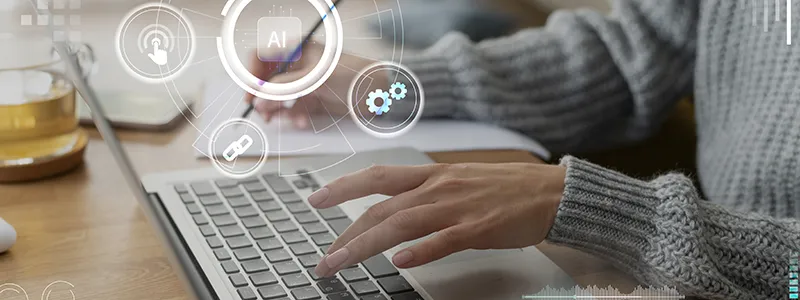Welcome to the digital world, where technology has become an integral part of our lives. Digital well being refers to how we can maintain a healthy balance in our relationship with technology, as it’s more important than ever in this digital age. In this article, we will explore what digital wellbeing is, its importance and the impact it can have on our lives. We will also share practical tools and tips to achieve good digital well-being. Keep reading to find out how you can find the perfect balance in this digital world!

Key points:
- Digital well-being involves maintaining a healthy balance in our relationship with technology.
- It is important to maintain good digital well-being to improve our physical and mental health.
- Good digital well-being can have a positive impact on our interpersonal relationships and our work productivity.
- There are tools and techniques that we can use to promote good digital well-being.
- Tips like setting screen time limits and finding offline activities can help us maintain a healthy balance in our digital lives.
What is Digital Wellbeing
Digital well-being refers to the healthy and balanced management of our relationship with technology. In an increasingly digitized world, it is important to understand how to use technology consciously and responsibly to promote our physical and mental well-being.
Digital well-being involves finding a balance between being connected and disconnected, taking advantage of the benefits of technology without it becoming a distraction or a source of stress. It is about using digital tools cautiously and establishing limits that allow us to maintain a balanced life.
Digital well-being does not mean completely avoiding the use of technology, but rather using it consciously and empowering ourselves to make decisions that improve our quality of life.
In short, digital wellbeing is about using technology wisely and responsibly, recognizing its value but also the potential negative effects of excessive use. By having a healthy relationship with technology, we can enjoy its benefits while protecting our physical, mental, and emotional health.
Importance of Digital Wellbeing
In modern life, maintaining good digital well-being has become an essential necessity. Digital well-being refers to the way we use technology in a conscious and balanced way to improve our physical and mental health, as well as our overall quality of life.
The importance of digital well-being lies in the multiple benefits it can bring to our lives. Technology gives us access to information, communication, entertainment and tools that can make our daily lives easier. However, misuse or abuse of technology can have detrimental effects on our health and well-being.
Maintaining good digital well-being involves setting healthy limits on technology use, practicing digital disconnection, and adopting healthy digital habits. By doing so, we can experience a number of benefits, such as:

- Improved physical health: Reducing screen time and promoting more physical activity can have a positive impact on our physical health. Spending less time in front of screens allows us to dedicate more time to activities such as exercise, outdoor sports and direct contact with nature, which improves our physical condition and overall well-being.
- Improved mental and emotional health: Excessive use of technology can increase stress, anxiety and affect our mental health. By setting boundaries and practicing digital disconnection, we can reduce information overload, improve our concentration, and promote greater calm and emotional balance.
- Better quality of life: By maintaining good digital well-being, we can take full advantage of the benefits of technology without it negatively interfering with our lives. We can use it as a tool to learn, work, connect with others and enjoy leisure activities, without compromising our health and well-being.
In short, digital well-being is essential to maintaining a healthy balance in the age of technology. By establishing boundaries and healthy digital habits, we can enjoy the benefits of technology without compromising our physical and mental health. Next, we will explore the impact of digital well-being in different aspects of our lives.
| Benefits of Digital Wellbeing | Examples |
| Improves concentration and productivity | Greater ability to focus on tasks and complete them efficiently. |
| Reduces stress and anxiety | Greater feeling of calm and emotional balance on a daily basis. |
| Promotes healthy interpersonal relationships | More time spent interacting with family and friends in person or virtually. |
| Stimulates creativity | More time for creative activities such as art, writing or music. |
| It enhances sleep quality | Increased rest and recovery during the night by limiting the use of electronic devices before bed. |
Impact of Digital Wellbeing
Digital wellbeing has a significant impact on various aspects of our lives. From our interpersonal relationships to our work productivity and emotional well-being, the right balance in our use of technology can make all the difference.
When we practice good digital well-being, our relationships become stronger. We can enjoy quality moments with our loved ones without technological distractions, fostering a deeper, more meaningful connection. Additionally, by being present in our personal interactions, we cultivate empathy and mutual support.
“Technology connects us to the world, but if we don’t disconnect in a timely manner, we can lose connection with the people who matter most.”
In the workplace, digital well-being can improve our productivity. By setting clear limits on technology use and avoiding constant multitasking, we can focus on important tasks and complete them more efficiently. This allows us to maintain a healthy balance between our work and our personal lives, avoiding burnout and work stress.
Furthermore, good digital well-being has a positive impact on our emotional well-being. By reducing exposure to negative or stressful content online, we can protect our mental health and promote greater satisfaction with our own lives. The time we spend disconnected from technology allows us to take care of ourselves, focus on our needs and enjoy activities that generate happiness and well-being.
Possible risks of poor digital well-being

On the other hand, poor digital well-being can have negative consequences in different aspects of our lives. Excessive use of technology can affect our interpersonal relationships, generating distance and lack of emotional connection. In addition, it can cause a decrease in our work productivity, since the constant digital distraction makes it difficult to concentrate and focus.
Poor management of digital wellbeing can also have an impact on our mental health. Excessive consumption of online content, especially that which is negative or harmful, can lead to anxiety, stress and a feeling of dissatisfaction with ourselves. It is essential to promote care for our mental health by establishing healthy limits on our use of technology.
| Aspect | Impact of Good Digital Wellbeing | Impact of Poor Digital Wellbeing |
| Relationships | Strengthening and emotional connection | Distancing and lack of connection |
| Labor productivity | Greater focus and efficiency | Distraction and decreased performance |
| Emotional well-being | Satisfaction and mental health care | Anxiety, stress and feelings of dissatisfaction |
Tools for Digital Wellbeing
In this section, we want to provide you with some practical tools and techniques to promote good digital well-being. We know that excessive use of technology can be detrimental to our health and well-being, so it is important to have strategies to balance our time online and offline.
Setting Screen Time Limits
One of the most effective tools for maintaining good digital well-being is to set screen time limits. This involves managing and controlling the time we spend using our electronic devices. You can use apps and settings on your devices to set reminders and daily usage limits.
Practice of digital disconnection
Another important tool is the practice of digital disconnection. It consists of establishing moments in which we completely disconnect from our devices and dedicate ourselves to offline activities. This allows us to rest, recharge, and enjoy other activities that are important to our well-being.
Adoption of healthy habits in the use of technology
In addition, it is essential to adopt healthy habits when using technology. This involves being aware of our online behavior patterns and taking steps to maintain a healthy balance. Some techniques include setting specific times to check emails or social media, changing the location of our phone while we sleep, and limiting electronic device use before bed.
Remember that these tools are only a guide, and each person can adapt them according to their needs and preferences. The most important thing is to find a balance that allows us to enjoy the benefits of technology without compromising our well-being.
Below, we present a table that summarizes some of the tools and techniques mentioned:
| Tools and Techniques | Description |
| Setting Screen Time Limits | Use apps and settings to control and limit the time you spend on electronic devices. |
| Practice of digital disconnection | Set regular times to completely disconnect from your devices and do offline activities. |
| Adoption of healthy habits | Establish healthy technology use routines, such as limiting use before bed. |
Remember that these are just a few tools and techniques that can help you improve your digital well-being. Each person is unique, so it’s important to find and adapt the strategies that work best for you.
Tips for Digital Wellbeing
Below, we offer you practical tips to effectively manage your relationship with technology and improve your digital well-being:
- Establish healthy sleep routines: Avoid using electronic devices before bed and create a relaxing routine that helps you fall asleep. Adequate rest is essential to maintaining optimal digital well-being.
- Take active breaks: Take regular breaks while using technology. Get up, stretch your body, walk around a bit, and do breathing exercises to relieve stress and reduce muscle tension.
- Search for offline activities: Spend time on activities that do not involve the use of electronic devices. This may include reading a book, playing sports outdoors, spending time with friends and family, or engaging in creative hobbies. These activities help balance your digital life and promote overall well-being.
- Set screen time limits: Define times when you will disconnect from electronic devices. Set limits on the use of social media, online games, and other forms of digital entertainment. These limits will help you avoid overuse and have more control over your time.
- Prioritize offline communication: Make sure you maintain meaningful connections with the people in your life outside of technology. Schedule in-person meetings, make phone calls, or send written messages to strengthen your interpersonal relationships.
Implementing these tips will help you maintain a healthy balance in your relationship with technology and improve your digital well-being. Remember that digital well-being is essential for your health and quality of life in the digital age.
Benefits of Digital Wellbeing
Digital well-being provides us with a series of benefits that improve our quality of life in the age of technology. By adopting healthy practices in our relationship with digital devices, we can experience the following benefits:
Improved Concentration
By setting limits on technology use, we can avoid constant distractions and stay focused on our tasks and goals. This allows us to improve our productivity and achieve a higher level of concentration in our daily activities.
Stress Reduction
When we balance our time online with offline activities, we reduce information overload and the constant bombardment of notifications. This helps us reduce stress levels and gives us greater mental peace.
Increase in General Satisfaction
By finding a healthy balance in our relationship with technology, we experience greater overall satisfaction in our lives. It allows us to enjoy the activities we like, cultivate our personal relationships and dedicate time to taking care of our health and well-being.
“Good digital well-being gives us greater focus, less stress and greater satisfaction in our lives.”
In short, investing in our digital well-being allows us to enjoy a more balanced and satisfying life. By implementing healthy and mindful practices when using technology, we can experience improved concentration, reduced stress, and greater overall satisfaction in our lives.

Conclusion
In conclusion, digital well-being is essential in our current society, where technology plays a central role in our lives. Throughout this article, we have explored what digital well-being is and its importance in maintaining a healthy balance.
It is crucial to remember that if we do not properly manage our relationship with technology, we may face risks to our well-being. Poor digital well-being can lead to problems such as mental exhaustion, lack of concentration, decreased productivity and affect our interpersonal relationships.
Therefore, it is essential to be aware of the possible risks of poor digital well-being and take measures to avoid them. Setting screen time limits, practicing digital disconnection regularly, and adopting healthy habits when using technology are some of the tools we can use to maintain optimal well-being.
Ultimately, seeking a healthy balance in our relationship with technology will allow us to enjoy its benefits without compromising our health and well-being. So don’t underestimate the importance of digital well-being and start taking steps today to take care of yourself in the digital age!
FAQ
What is digital well-being?
Digital well-being refers to the healthy and balanced management of our relationship with technology. It involves using technology consciously and responsibly to promote our physical and mental health.
Why is digital well-being important?
Digital well-being is important because it helps us maintain a healthy balance in our digital lives. It allows us to use technology beneficially, reduce digital stress and improve our overall quality of life.
What is the impact of digital well-being on our lives?
Digital well-being has a significant impact on different aspects of our lives. It can improve our interpersonal relationships, increase our work productivity and promote our emotional well-being. However, poor digital well-being can have risks for our health and well-being.
What tools can I use to promote my digital well-being?
There are several tools you can use to promote your digital well-being. Some of them include setting limits on screen time, practicing digital disconnection regularly, and adopting healthy habits around technology use.
Do you have any tips to improve my digital well-being?
Sure, I can offer you some practical advice. It is important to establish healthy sleep routines, take active breaks and look for offline activities that allow you to balance your digital life. It is also advisable to establish clear limits on the use of technology.
What are the benefits of digital well-being?
Digital wellness has many benefits. It can improve your concentration, reduce stress, and increase your overall satisfaction. In addition, it promotes healthier interpersonal relationships and allows you to take full advantage of the advantages of technology.
Follow all our blog articles and
Follow us on social networks! Facebook Instagram
Disclaimer
This article is for informational purposes only and should not be considered medical advice. It is not intended to diagnose, treat, cure, or prevent any disease. The information provided does not replace a consultation with a qualified physician or other healthcare professional. If you have symptoms, pre-existing medical conditions, or concerns about your health, consult a doctor before making any decisions based on this content. In case of a medical emergency, seek immediate care at a healthcare facility or call emergency services.
